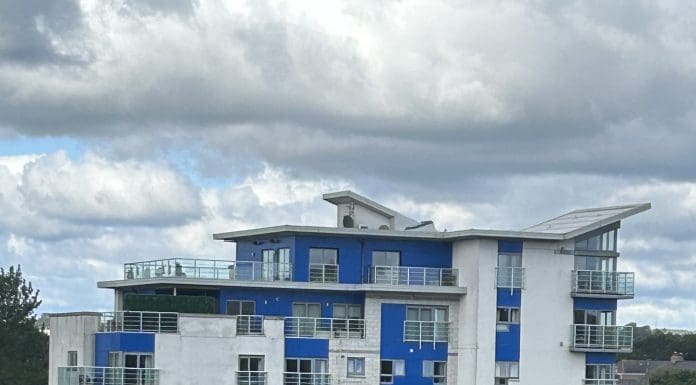Research from Diamond & Company has found that around 5,500 private and public buildings across Scotland taller than 11m (36ft) have still flammable cladding
The nine-storey Aurora Apartments in Aberdeen are one of several ‘high priority’ buildings in Scotland to be identified as having flammable cladding in the Scottish Government’s pilot programme on cladding remediation as part of the Single Building Assessment.
The Aurora work was managed by Diamond & Company (Scotland) Ltd Chartered Building Surveyors and Chartered Fire Engineers.
The research, based on Diamond & Company’s cladding remediation work- has been published following the publication of the final report of the Grenfell Tower public inquiry into the 2017 fire that killed 72 people.
Seven years after Grenfell, only one building in Scotland has completed cladding remediation works
It is estimated that around 25,000 people living in flats in high rise buildings – defined as five storeys or more – are affected. Some of the buildings are in landmark developments such as Glasgow Harbour and Edinburgh’s Western Harbour.
The predicted bill for removing and replacing the combustible cladding with safe materials is expected to eventually reach £7.5bn in Scotland.
Phil Diamond, managing director of Diamond and Company, said: “The catastrophic loss of so many lives in the Grenfell Tower fire should have been the wake-up call for an immediate overhaul of the housing industry and planning system.
“Yet, seven years on, little has changed. In Scotland, only one building has had its cladding stripped and replaced through a Scottish Government pilot project.
“The stark reality is that it’s estimated a further 5,500 private and public high-rise buildings contain flammable cladding affecting around 25,000 people.
ACM is not the only dangerous cladding present in the UK
“The cladding used on Grenfell Tower is known as Aluminium Composite Material (ACM) but worryingly there are around eight other different types of combustible cladding that have been used in buildings up and down the country over the past 20-25 years.
“These include so-called ‘honeycomb’ panels coated in acrylic render, which melt at low temperatures.
“They were not originally designed for use as a cladding material, yet the panels have been identified on the outside of several landmark high-rise developments around the UK.
“Decades of inaction has led us to this critical point and it’s going to cost a lot of money to fix the problem, estimated to be as much as £7.5bn in Scotland.”
Processes are in place to remove flammable cladding in Scotland, but works must speed up
A law to ban combustible cladding on high-risk buildings, and the highest risk metal composite cladding material from all buildings, was passed by the Scottish Parliament in April 2022.
This was implemented by amendments to the Building (Scotland) Regulations 2004, introduced on 1 June 2022, which bans the use of combustible materials on domestic high-rise buildings above 36ft (11m), care homes and hospitals.
The Single Building Assessment (SBA) identifies life-critical fire safety risks and any mitigation or remediation required to make a building safer. The Aurora Apartments was identified to test the SBA as part of the government pilot programme.
Phil Diamond added: “There is now an urgent need for government in Scotland and at UK level, along with the building industry to work in partnership to make our high-rise buildings safe.
“Simplifying a cumbersome procurement system would speed up the risk assessments, to identify the dangerous cladding, and the work needed to remove and replace these flammable materials.
“One bit of positive news is that the methodologies for assessing these high-rise buildings is finally in place. We now owe it to those who died at Grenfell to have the courage to take the rapid action needed to ensure such a tragedy never happens again.”
The post Over 5,000 high-rise buildings in Scotland still covered with flammable cladding appeared first on Planning, Building & Construction Today.


